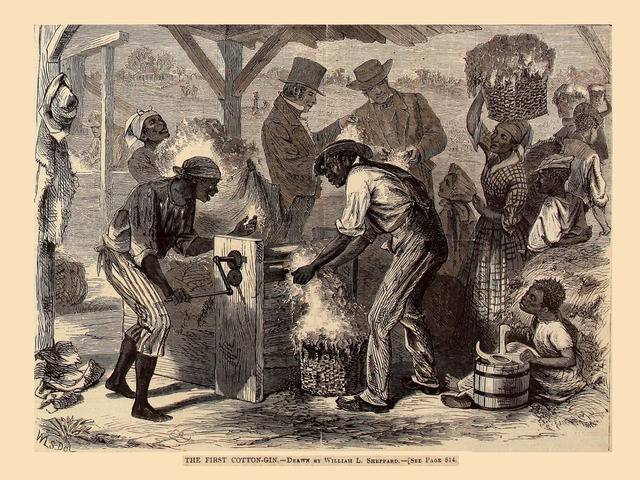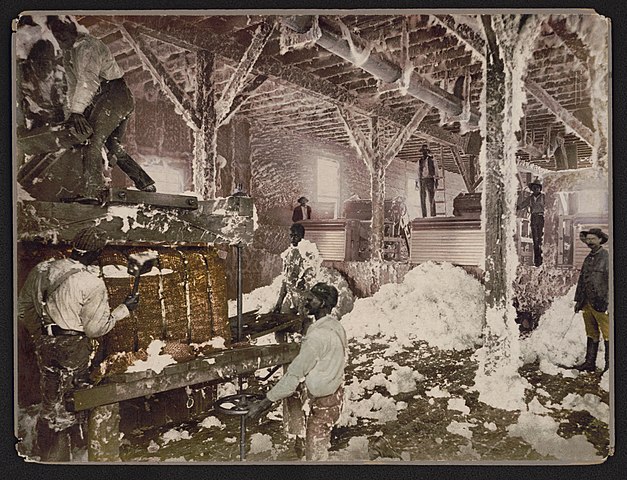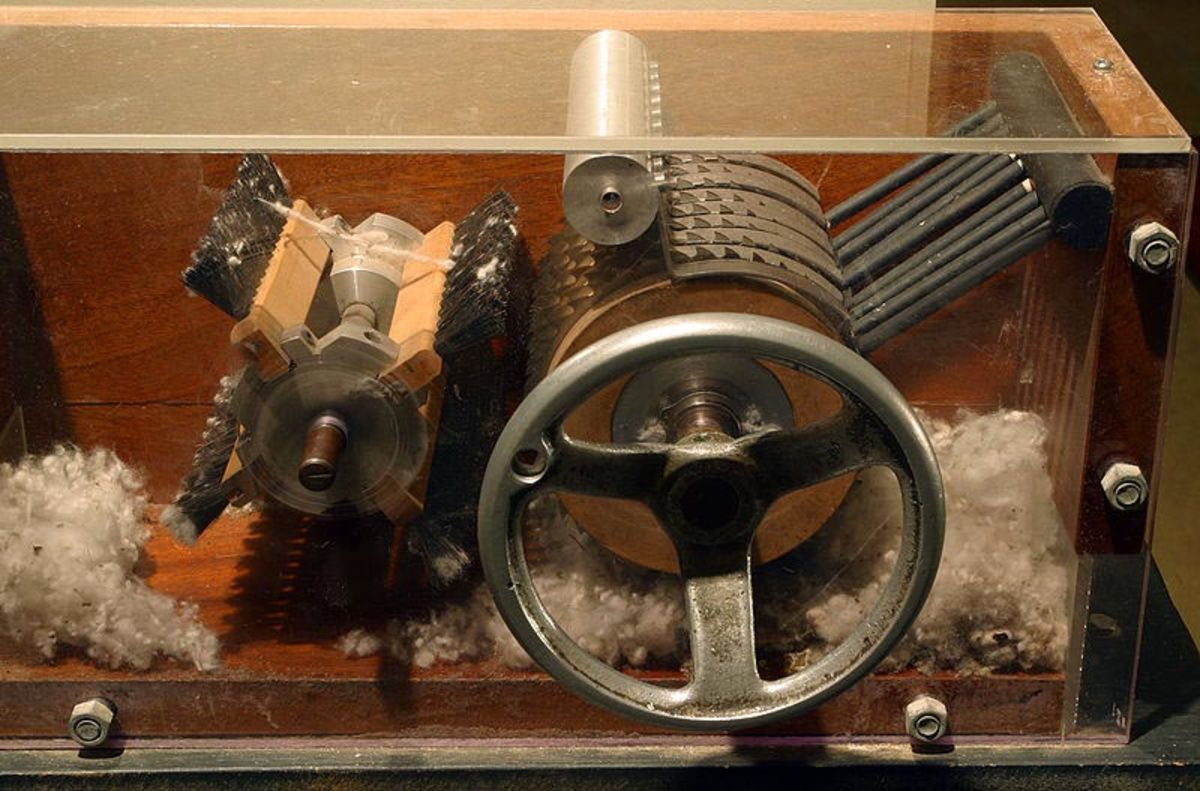The Cotton Gin revolutionized the cotton industry in America during the late eighteenth and early nineteenth century.
The Cotton gin sped up the extraction of cotton seeds from the fiber to such and extent that it could replace the work of fifty men or women doing the same work.
This led to the cotton industry becoming considerably more profitable than it had ever been which led to an explosion in both the number and size of cotton plantations in the south.
Despite this massive labor saving, the cotton gin actually led to a increase in the number of slaves that were brought in from Africa due to the fact that more labor was required to grow and pick cotton on a massive industrial scale.
Who Invented the Cotton Gin?
Eli Whitney (1765-1825) invented the cotton gin.
When was the Cotton Gin Invented?
The cotton gin was invented in 1793 and the patent for the cotton gin was obtained one year later in 1794.
What did the Cotton Gin Do?
The cotton gin separated cotton fibers from their seeds. Prior to this it had to be done by hand and was very labor intensive.
How does the Cotton Gin Work?
The cotton gin works by having a wooden drum that was covered in small hooks turn behind a mesh. As the drum turns the hooks pull the cotton through the mesh which is large enough to allow the cotton to move freely through it but small enough so that the seeds could not.

How did the Cotton Gin Affect Slavery?
The cotton gin increased the demand for slavery in America as it made cotton growing far more profitable for plantation owners which that meant more slaves were needed to both grow and pick the cotton.
Also Read: Facts About Eli Whitney
By the mid-nineteenth century cotton had grown to become America’s leading export and the fortunes of plantation owners increased greatly.
Cotton Gin Facts
1. Patent Number 72-X
The official patent number of the cotton gin is 72-X and was issued in 1794. At the time when a patent was granted it would only be valid for 14 years(today it is 20).
2. Could Produce 50 pounds a Day
The Cotton gin from was able to produce approximately 50 pounds of lint a day. This was a massive leap forward and replaced approximately 50 slaves.
Early designs were turned by hand, much larger later machines were steam or horse powered and could produce considerably more.

3. ‘Gin’ is Short for Engine
The name cotton gin is actually a shortened version of the cotton engine.
4. The Seeds were not Wasted
Following the extraction of the seeds from the lint they were used to make cotton seed oil or replanted to grow more cotton.
5. Catherine Littlefield is Said to be it’s Co-Creator
At the time women were excluded from filing a patent and some historians have claimed that Eli Whitney only built the prototype and it was actually Catherine Littlefield who came up with the idea.
6. Due to Legal Issues Whitney Made Very Little Money
Both Whitney and his business partner Phineas Miller had to fight several expensive legal battles after farmers refused to pay Whitney two-fifths of the profit from their farms.

A legal loophole existed that allowed them to make similar machines and claim them as new inventions, the loophole was not closed until 1800 but legal battles continued for many years.
The legal disputes were only resolved when the original patent had only a year left to run and thus they made only a fraction of what they should have from such an important invention.
7. Cotton Production Doubled Every Decade
After the invention of the cotton gin production of cotton doubled every decade for several decades in a row. This demand was partly fueled by the industrial revolution and the introduction of cotton spinning machines and textile factories in the northern states of America.
